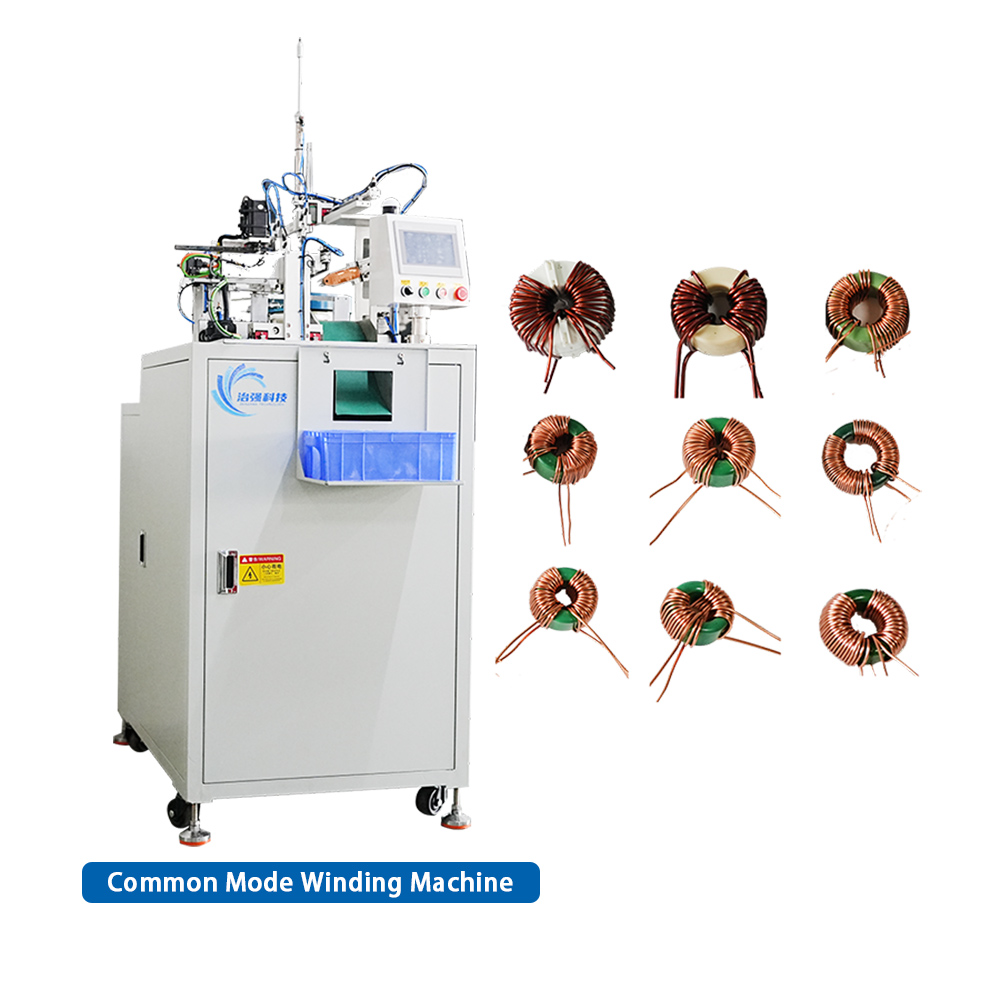
2025-07-03 18:07:32
A Common Mode Winding Machine is a specialized industrial device designed for the precise winding of coils used in common mode chokes, transformers, and other electromagnetic components. These machines ensure high accuracy in winding patterns, tension control, and layer alignment, which are critical for the performance of common mode filters in suppressing electromagnetic interference (EMI).
Key characteristics of these machines include programmable logic controllers (PLCs), servo-driven mechanisms, and real-time monitoring systems to maintain winding precision within ±0.01mm tolerance.

Modern Common Mode Winding Machines incorporate advanced technologies to meet stringent industry requirements:
Precision Winding: Achieves winding accuracy of ±0.005mm with servo motors providing 0.01° angular resolution.
Tension Control: Equipped with closed-loop tension systems maintaining 5-500g with ±1% variation.
Speed: High-speed operation up to 3,000 RPM for efficient production.
Multi-Axis Control: Typically features 4-6 axes of synchronized motion for complex winding patterns.
Material Compatibility: Handles wire diameters from 0.02mm to 2.5mm with various insulation types.
Automation: Integrated vision systems for 100% quality inspection at 30 frames/second.
Common Mode Winding Machines serve critical functions across multiple sectors:
Power Electronics: Manufacturing common mode chokes for switch-mode power supplies with 10kHz-1MHz noise suppression capability.
Automotive: Producing EMI filters for electric vehicle powertrains meeting ISO 7637-2 standards.
Telecommunications: Creating broadband filters for 5G infrastructure components.
Industrial Automation: Winding noise suppression coils for servo drives operating at 480VAC with 100A current ratings.
Medical Equipment: Fabricating precision coils for MRI machines requiring 0.1μH inductance tolerance.
Proper maintenance ensures optimal performance and longevity:
Clean guide rails and linear bearings with ISO VG 32 hydraulic oil.
Inspect wire tensioners for wear exceeding 0.1mm groove deformation.
Verify servo motor temperatures remain below 65°C during operation.
Lubricate ball screws with NLGI Grade 2 lithium grease.
Calibrate tension sensors using Class F calibration weights.
Check pneumatic systems for leaks at 0.5MPa operating pressure.
Replace worn guide rollers showing >0.05mm runout.
Inspect electrical connections for proper torque (2.5Nm for terminal blocks).
Update PLC firmware and backup machine parameters.
Perform laser alignment of all motion axes to 0.02mm/m straightness.
Replace servo motor brushes if worn beyond 50% original length.
Conduct insulation resistance tests (>100MΩ at 500VDC).
Typical problems and solutions:
Irregular Winding Patterns: Check servo encoder resolution (20-bit recommended) and backlash compensation settings.
Wire Breakage: Verify proper wire annealing (typically 200-300°C for copper) and tension settings.
Layer Misalignment: Adjust traverse mechanism acceleration to 0.3-0.5m/s² and verify cam profile settings.

Specialised in automated winding equipment and system development, production, sales and technical services as one of the high-tech enterprises.
+0769 82312151
+86 135 8090 8886
+86 131 9207 5119
3F, No.51 Minghua Road, Liangjia Village, Shijie Town, Dongguan City, Guangdong Province, China
Copyright © 2025 Dongguan Zhiqiang Electronic Technology Co., LTD | Privacy Policy | Terms and Conditions